Trump says Iran wants to negotiate after US show of force
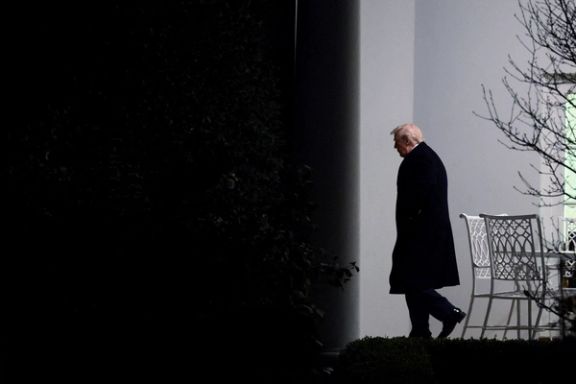
US President Donald Trump said Iran now wants to negotiate a deal after the US strikes on its nuclear sites in June, arguing that renewed US military strength had changed Tehran’s stance.

US President Donald Trump said Iran now wants to negotiate a deal after the US strikes on its nuclear sites in June, arguing that renewed US military strength had changed Tehran’s stance.
“Iran is a different place” after the June strikes, Trump said aboard his plane en route to Florida on Friday. “Iran wants to negotiate a deal, too. Everybody wants to negotiate with us now.” He said this shift would not have happened “if we didn’t have military strength, if we didn’t rebuild our military in my first term.” He added that there had been “tremendous interest” in the Abraham Accords “since we put Iran out of business.”
The comments came a day after a senior aide in Supreme Leader Ali Khamenei’s office outlined strict conditions under which talks with the United States could take place. Mehdi Fazaeli said negotiations were “not absolutely forbidden” if they were tightly controlled and served Iran’s higher interests, while stressing what he called deep mistrust of Washington.
Fazaeli said Khamenei had at times allowed narrow contacts on Iraq, Afghanistan and nuclear issues, but rejected talks that could be seen as retreat. Negotiations collapsed after Israel launched surprise strikes on Iran in June, followed by US attacks on nuclear facilities that killed hundreds of civilians and military personnel.
The UN nuclear watchdog said this week it has been unable to check Iran’s enriched uranium stockpile for five months. Before June, it had confirmed Iran held about 440 kilograms enriched to 60 percent.
Iran Foreign Minister Abbas Araghchi wrote to the UN chief this week saying Trump had publicly admitted to directing Israel’s initial strikes and urged the United Nations to seek reparations from Washington.
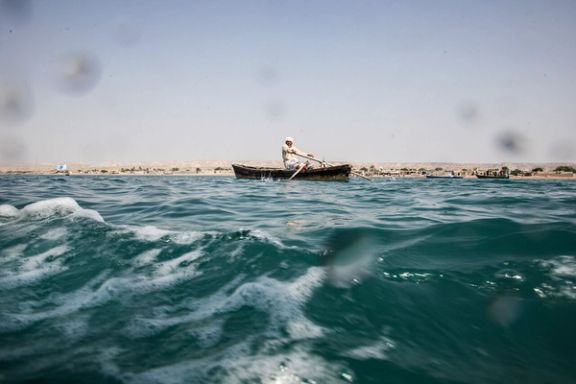
Iran Energy Minister Abbas Aliabadi said using Persian Gulf water for Tehran could be done in an emergency as a last resort, since the long haul and treatment costs make the plan uneconomic in normal times.
Aliabadi said the price of sending desalinated water from the south to the capital was far above what the state could justify in day-to-day planning. “This is not an economic option,” he said, adding that officials “will do whatever is needed” if people’s safety is at risk.
He said Tehran’s water stress meant all workable options had to be reviewed but said some crops consumed water in ways that “do not make economic sense” and should not be supported.
Aliabadi said large desalination sites were being built in Chabahar, Bandar Abbas and Khuzestan to strengthen water supplies in the south and draw in private investment. If those plants ease pressure in the south, he said, water now moved upstream could instead be kept for Tehran and northern areas, though he said this needed detailed study.
Former minister voices strong objection
Former transport minister Abbas Akhoundi criticized the approach, saying it overlooks environmental limits and the long-term cost for the public.
He wrote that the government could not “force nature to bend to machines” and said both capital relocation plans and major desalination transfers misunderstood why Iran faces deep water stress. He said such projects would burden the country without solving the core problem and would mainly benefit contractors.
Water specialists warn Iran is nearing what they describe as water bankruptcy, where use has exceeded supply for years and the reserves that once fed major cities have been depleted.
Kaveh Madani, director of the UN University Institute for Water, Environment and Health, told Eye for Iran that Tehran’s reservoirs are near historic lows and that the capital is approaching “day zero,” when steady tap water can no longer be assumed.
He said if winter rains fall short, daily life in major cities could shift to storage tanks, tanker deliveries and bottled water.

Tehran and other major cities are edging toward water poverty, Dr. Kaveh Madani told Eye for Iran, with millions at risk of relying for their water on tankers trucks as taps begin to run dry.
Madani, director of the UN University Institute for Water, Environment and Health and former deputy head of Iran’s Department of Environment, told Eye for Iran that the country is not going through a normal drought but what he calls water bankruptcy.
This is a condition in which consumption exceeds supply and the reserves built over generations have already been drained.
“We have never seen such a thing,” Madani said. “The people of Tehran, the city that is the richest, most populous and strongest politically, is running out of water, is facing day zero.”
Satellite images and field data show alarming patterns nationwide. Tehran’s five main reservoirs are at some of their lowest recorded levels. Mashhad’s major dams have fallen below 3 percent capacity.
In many regions groundwater has sunk so deep that recovery is unlikely in this generation. The Ministry of Energy has already prepared rationing plans. Some neighborhoods have reported nighttime cuts. Officials have urged households to purchase storage tanks.
But experts stress that households are only a small part of the equation. More than 70 percent of Iran’s 90 million people live in large cities with no mid-size urban centers to absorb population shifts.
Ninety percent of all water use still goes to agriculture, a sector governments have protected for decades under a policy of food self-sufficiency. That choice has prevented water from being redirected toward cities even as the climate has grown hotter and drier.
For decades the state masked scarcity by expanding supply: building dams, drilling deeper wells and pumping water across basins from distant aquifers.
These measures created the illusion that dry regions, including the Tehran plain, could continue to grow. Over time that perception encouraged development and migration beyond what the land could sustain.
Aquifers drained, river exhaustion
With reserves depleted, Iran’s cities have very little left to fall back on.
Madani warns that if winter rains fail life in major cities could shift abruptly. “It means pumps and stores, delivery through tankers, more bottled water instead of tap water, a change of lifestyle.”
At the same time he cautions against mistaking brief rainfall or even seasonal floods for real recovery.
One storm could momentarily refill canals or ease pressure on local networks. But the underlying deficits, from drained aquifers to collapsing river systems, remain unchanged. “These days are real,” Madani said. “And even if in a few months there are floods, we shouldn’t conclude the problem has been resolved forever.”
Years of sanctions and a so-called resistance economy have pushed the state to extract whatever natural resources remain. Environmental reform is costly and slow with benefits that may not appear for a decade.
Asking citizens to cut consumption requires public trust, something the government lacks. Without transparent information about what reserves remain and clear communication about the severity of the crisis, cooperation will remain limited.
There is still a narrow window, Madani says. A few hours of concentrated rainfall could buy cities days. Collective reductions in consumption could buy weeks. But the structural imbalance, too many people and too little water, is now a national reality.
“This is a national security issue,” he said. “It affects every Iranian, no matter who is in charge.”
You can watch the full episode of Eye for Iran on YouTube or listen on any podcast platform of your choosing.

Iran's UN ambassador Amir Saeid Iravani said Tehran will never surrender to threats or coercion during a General Assembly speech on Friday addressing a report by the UN nuclear agency urging to restore international inspections.
Iravani said the International Atomic Energy Agency (IAEA) insists on access and inspection of attacked sites, but that requires new “modalities” to ensure the safety of the nuclear sites and their staff.
The IAEA's November report highlights Iran's denial of access to seven attacked nuclear sites for five months, voiding a September access deal and eroding safeguards verification.
Iravani criticized the reimposition of UN sanctions on Iran triggered by European powers, saying the a mechanism to reinstate them was based on a lapsed nuclear agreement.
“Resolution 2231 expired permanently in October, ending all related restrictions. Any attempt to revive or reimplement them is an illegal abuse of procedures and must be firmly rejected by this assembly and the Secretary-General,” Iravani said in a speech published by official media.
Under UN Security Council Resolution 2231, any participant in the Iran nuclear deal (JCPOA) - the E3 (France, Germany, UK), Russia, China or the United States could file a non-compliance complaint with the UN Security Council.
The E3 initiated the non-compliance process in August, and UN sanctions were fully activated and reimposed in September.
“The action by the three European countries to activate the so-called ‘trigger’ mechanism is an illegal, reckless move aimed at destroying the last bridge of diplomacy, and thus lacks any validity,” Iravani said.
'Inspection mdalities'
Iravani condemned Israel's June strikes on Iranian nuclear sites and subsequent US attacks, demanding condemnation from UN and IAEA officials.
The IAEA report also criticizes Iran's nuclear program for non-compliance, citing undeclared uranium traces at secret sites and stockpiles of 440.9 kg (972 pounds) enriched to 60% purity.
A 12-day war in June killed hundreds of military personnel and civilians; Iranian counterattacks killed 32 Israeli civilians and an off-duty soldier.
"Our response is only to respect, the rule of law, and equality. Military aggression and economic terrorism will never force Iran to forgo its legitimate rights,” Iravani said.
Iran says as a participant in the Non-Proliferation Treaty, it has the right to pursue uranium enrichment, which the West disputes.
Tehran denies seeking a nuclear weapon, citing a religious decree by Supreme Leader Ali Khamenei; it rejects giving up its nuclear activities and has said discussions on its defense posture are a non-starter.
G7 foreign ministers urged Iran to fully comply with UN resolutions and NPT obligations during their Niagara summit on Tuesday, calling for renewed IAEA cooperation and direct US engagement backed by the E3.
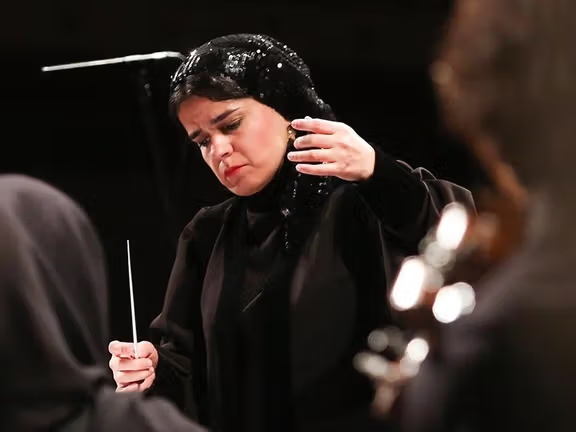
Paniz Faryousefi made history as the first woman to lead Iran's Tehran Symphony Orchestra since the 1979 Islamic Revolution, conducting sold-out shows Wednesday and Thursday at Vahdat Hall despite long official gender bias in the arts.
Though other Iranian women have led youth ensembles or smaller groups, Faryousefi achieved a major breakthrough.
The violinist, trained at Tehran's Music Conservatory and Armenia's Komitas State Conservatory, drew inspiration from conductors Aram Gharabekian and Stanislav Kochanovsky.
As concertmaster of the Tehran Philharmonic and a composer, she helmed the "Land of Simurgh" program with works by Iranian composers Aftab Darvishi and Golfam Khayam, plus Schumann, Sibelius, and Khachaturian.
"Art belongs to humanity, not to men and women," Faryousefi said after the performances, underscoring the milestone for women artists.
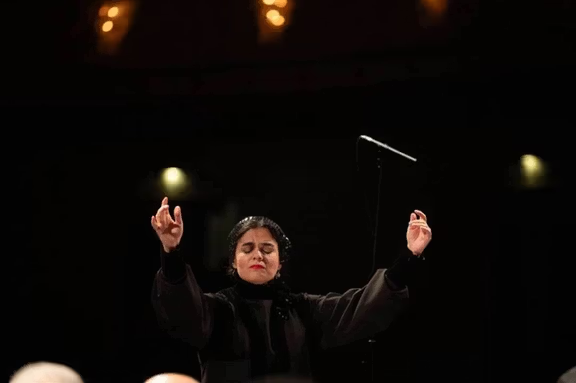
The concerts highlight a cultural flux in Iran.
"Woman, Life, Freedom" protests against the theocracy's mandatory hijab were crushed with deadly force, but further draconian legislation and much enforcement has lapsed as authorities seek to avoid unrest.
Women presence
Apart from Faryousefi, two other women have conducted orchestras in Iran. Nazanin Aghakhani led the Tehran Youth Orchestra in 2014, and Nezhat Amiri directed a 71-member ensemble in Tehran in 2018.
Vienna-born Aghakhani has a history of conducting orchestras in various countries, was invited to Iran in 2011 on the recommendation of Loris Tjeknavorian to lead the Tehran Symphony Orchestra. She was scheduled for four performances but was denied public performance permits.
Tjeknavorian is an Iranian-Armenian composer and conductor who is renowned for symphonies, operas and leading orchestras like the Armenian Philharmonic.

Tehran's state-appointed Friday prayer leader said that defiance of the Islamic veil was tantamount to collaboration with Israel and the United States, underscoring tension in the clerical establishment on hijab enforcement.
“An American author said: 'Remove the hijab, and you've effectively joined Mossad operations.' I urge all women to consider their faith and country,” Ahmad Khatami said at a prayer gathering on the Islamic holy day of the week.
Khatami went on to say half of those defying the mandatory headscarf need to come back to Shi'ite Islam.
"Unveiled women fall into two groups: adversaries whom the law confronts, and Shi'ite well-wishers who must align with Fatima Camp. I implore all women to prioritize their faith and nation,” Khatami said.
Fatima al-Zahra, daughter of Prophet Muhammad, wife of Ali the first Shiite Imam holds unparalleled status as the only woman in the Prophet's infallible household, making her central to Shiite theology and devotion.
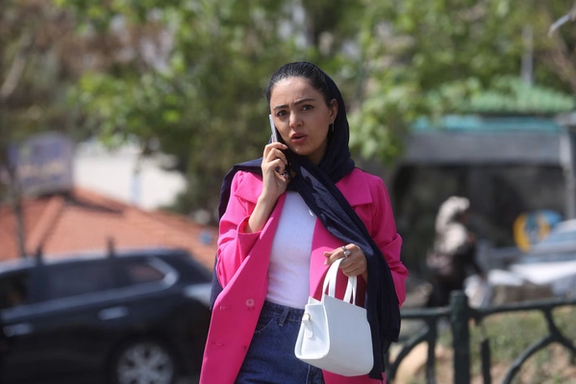
Visible change
Despite mounting threats, civil resistance to the mandatory hijab persists, with many women appearing in public without it to reject the policy.
Enforcement has slackened and a draconian new law on veiling was paused.
While political and espionage arrests have mounted along with executions, authorities have tamped down on veiling as social and economic pressures mount in Iran.
Women and girls in Iran have increasingly defied the mandatory headscarf since the "Woman, Life, Freedom" protest movement, sparked by the death of young Mahsa Amini in morality police custody in 2022.
Critics argue the state’s expanding enforcement apparatus shows that the priority is social control rather than easing economic hardship.